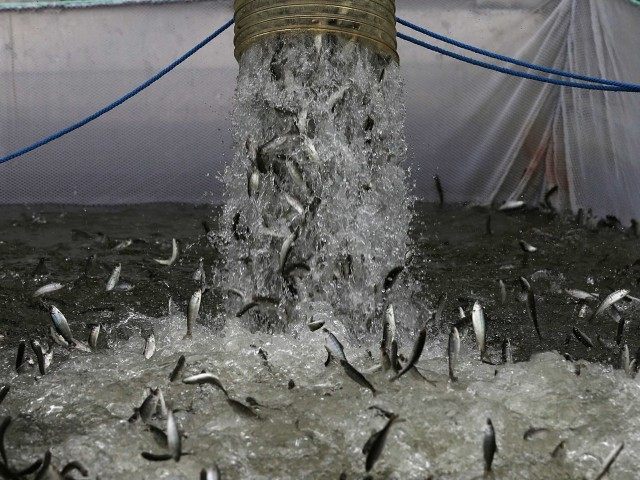The California State Water Resources Control Board voted unanimously on Tuesday to back away from a controversial plan that would have held water back from cities and farmers in order to save an endangered species of salmon.
The plan, announced by the Board last week, would have required an additional 200,000 acre-feet of water to be held back in Lake Shasta through next fall in order keep the Sacramento River at a relatively cool 56 degrees when the water would ultimately be released.
Juvenile winter-run Chinook salmon, protected under the federal Endangered Species Act, require a minimum temperature of 56 degrees to live.
The plan would also have meant reduced water deliveries for farmers and cities for a third straight year, at a time when the state’s record drought has already choked off agricultural water supplies.
The Board voted 4-0 Tuesday to nix the plan, according to the Sacramento Bee. Instead, it authorized the U.S. Bureau of Reclamation to come up with its own method for ensuring temperatures remain at or below 56 degrees. Board vice-chair Frances Spivy-Weber told the paper that the Board gave Reclamation and the Department of Water Resources a March 15 deadline to submit a revised Sacramento River temperature control plan. The agencies could still decide to keep more water in Lake Shasta, but the Board designated the 200,000 additional acre-feet of water a “planning target” rather than a requirement.
Both farmers and environmentalists had roundly criticized the original plan. Farmers said holding the water would result in reduced water deliveries, while environmentalists said the plan would not ensure the salmon’s survival.
Pressure has increased on both the state water board and Reclamation to get the temperature control plan right this year. Last year, faulty temperature gauges were responsible for the deaths of 95 percent of the river’s winter-run Chinook salmon. With a three-year spawning cycle, the coming year marks the last chance the Board has to get the plan right before the winter-run Chinook faces a serious extinction threat.

COMMENTS
Please let us know if you're having issues with commenting.